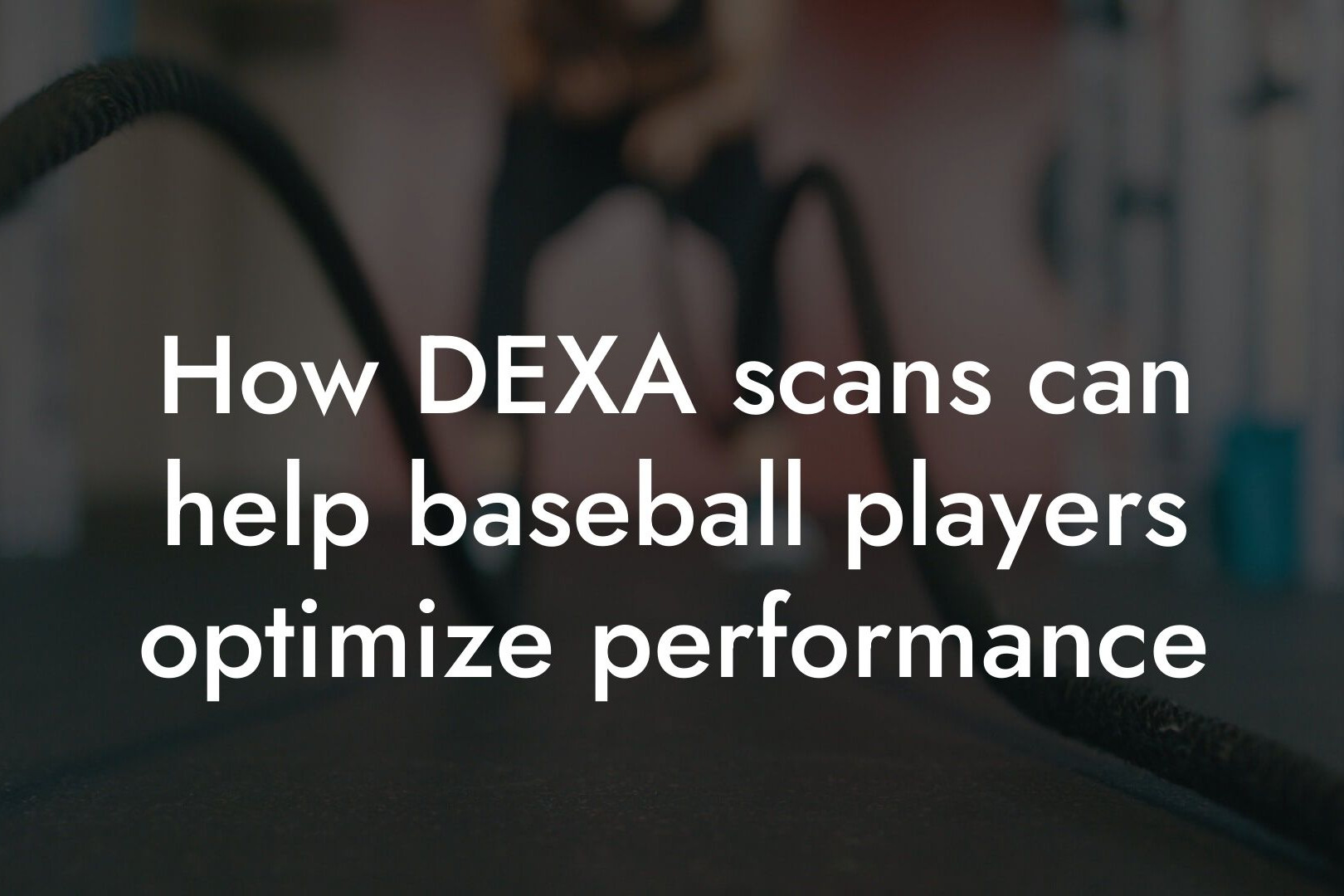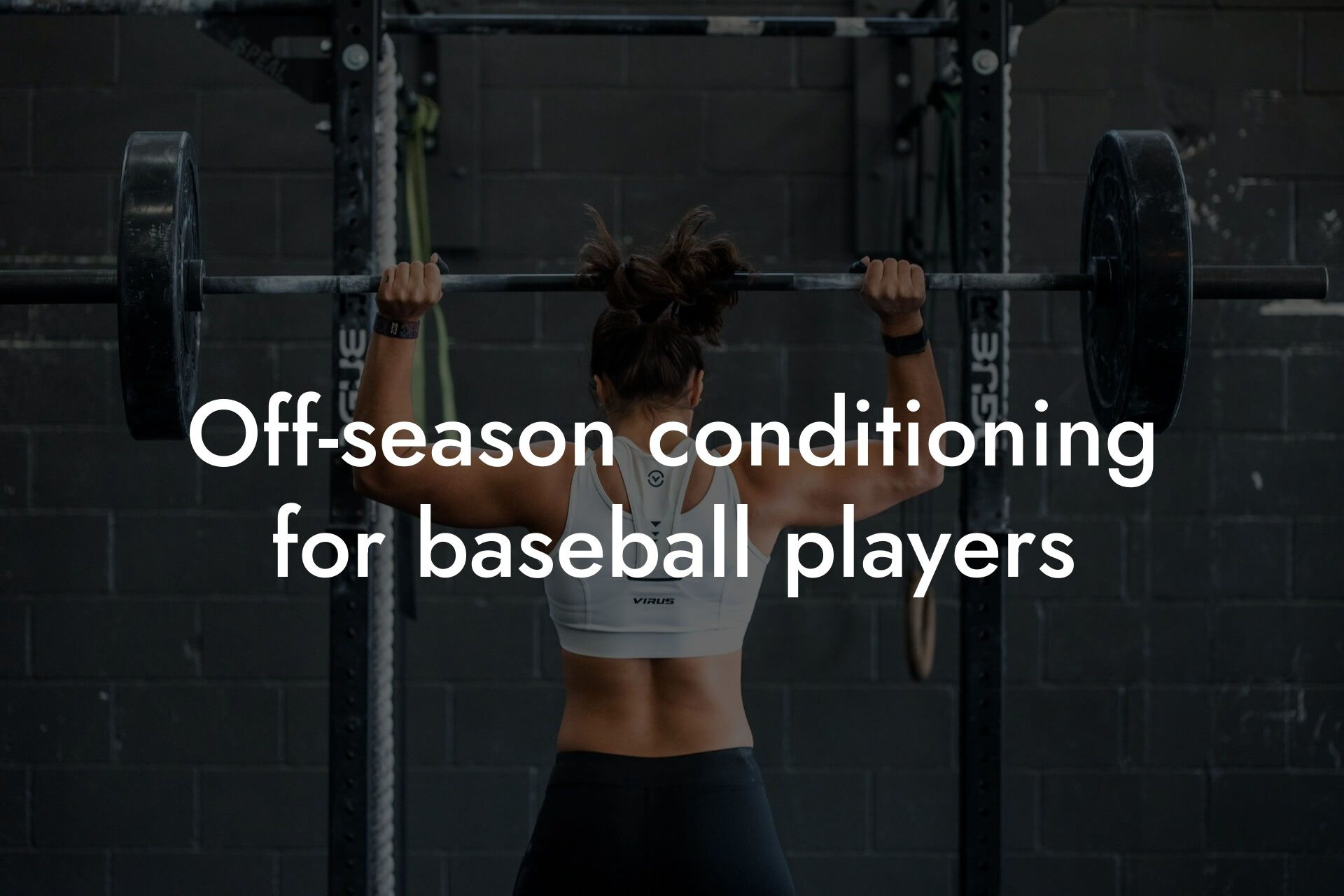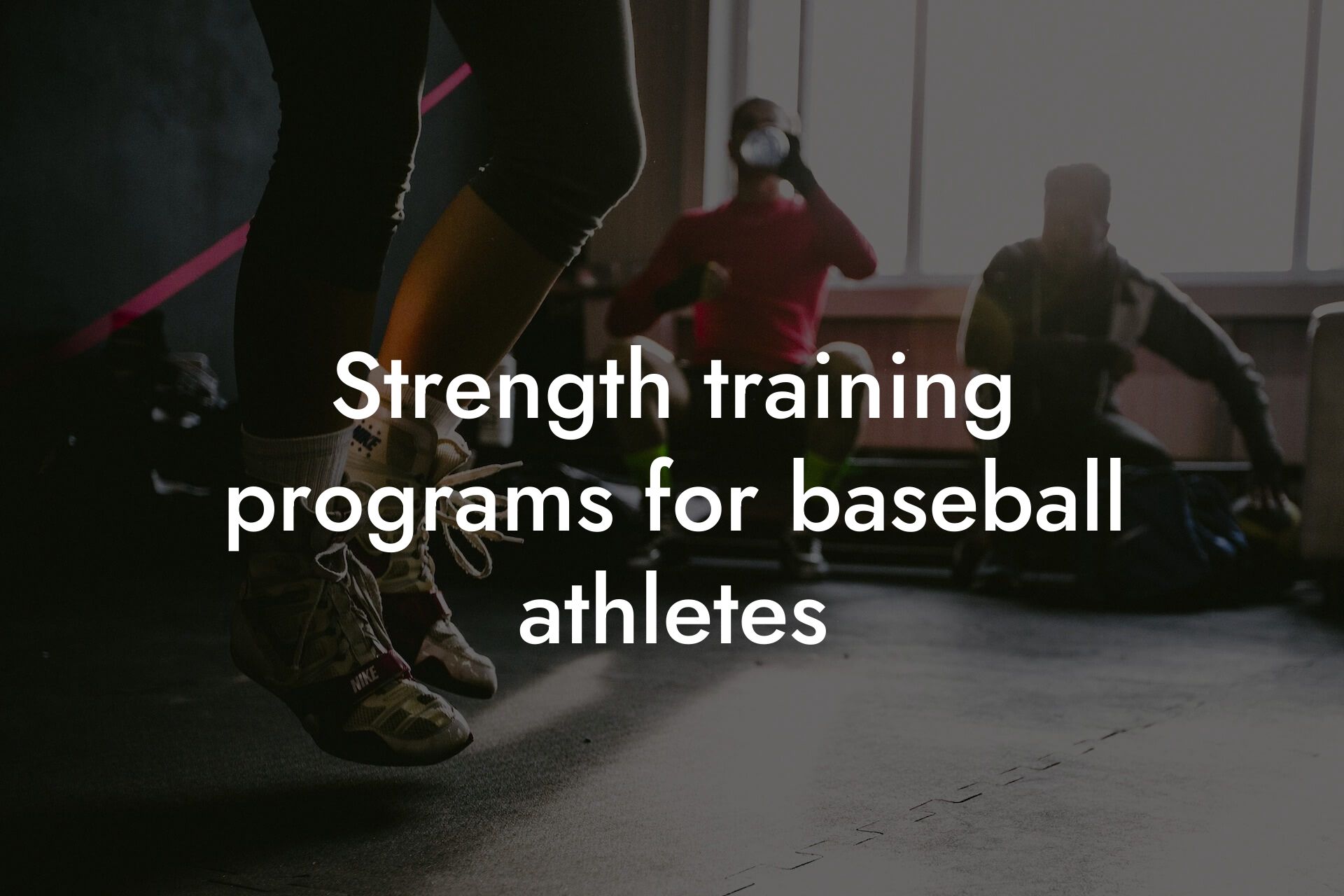As a high-earning professional, you understand the importance of maintaining peak physical performance to excel in your career. For baseball athletes, recovery strategies play a crucial role in optimizing performance, preventing injuries, and extending their careers. In this article, we'll delve into the world of recovery strategies specifically designed for baseball athletes, providing you with the knowledge and tools to take your game to the next level.
Table of Contents
The Importance of Recovery in Baseball
Baseball is a high-intensity sport that demands a tremendous amount of physical effort from its athletes. The repetitive nature of throwing, hitting, and running can lead to fatigue, muscle soreness, and increased risk of injury. Adequate recovery is essential to repair and rebuild damaged tissues, replenish energy stores, and maintain optimal physical function. In fact, research suggests that proper recovery strategies can improve athletic performance by up to 10%.
Types of Recovery Strategies
There are various recovery strategies that baseball athletes can incorporate into their training regimen. These can be broadly classified into two categories: passive and active recovery strategies.
Passive recovery strategies include:
- Rest and relaxation
- Stretching and foam rolling
- Massage therapy
- Cryotherapy and heat therapy
- Compression garments and elevation
Active recovery strategies include:
- Light cardio such as jogging or cycling
- Resistance band exercises
- Swimming and water-based exercises
- Yoga and Pilates
- Low-intensity strength training
Post-Game Recovery Strategies
The 24-48 hour window following a game is critical for recovery. During this period, baseball athletes should focus on replenishing energy stores, reducing muscle soreness, and promoting tissue repair. Some effective post-game recovery strategies include:
- Consuming a balanced meal with carbohydrates and protein within 30-60 minutes of the game
- Drinking 16-20 ounces of water or sports drink for every pound of body weight lost during the game
- Engaging in light stretching and foam rolling to reduce muscle tension
- Using cryotherapy or heat therapy to reduce inflammation and promote recovery
In-Season Recovery Strategies
During the baseball season, athletes may not have the luxury of taking extended periods of rest. In-season recovery strategies focus on maintaining physical function and reducing the risk of injury. Some effective in-season recovery strategies include:
- Incorporating active recovery sessions such as yoga or swimming into the training regimen
- Using compression garments and elevation to reduce muscle soreness
- Engaging in strength training exercises to maintain muscle mass and strength
- Getting 7-9 hours of sleep each night to aid in recovery
Off-Season Recovery Strategies
The off-season provides an opportunity for baseball athletes to focus on rebuilding and strengthening their bodies. Some effective off-season recovery strategies include:
- Incorporating strength training exercises to build muscle mass and strength
- Engaging in plyometric and agility training to improve power and speed
- Using DEXA scans to assess body composition and identify areas for improvement
- Focusing on nutrition and meal planning to optimize body composition
Individualized Recovery Strategies
Each baseball athlete is unique, with different needs and requirements. Individualized recovery strategies take into account factors such as age, position, and injury history. For example:
- Pitchers may require additional focus on shoulder and elbow recovery
- Position players may require additional focus on lower body strength and power
- Athletes with a history of injury may require additional focus on rehabilitation and prevention
Recovery strategies play a critical role in optimizing performance, preventing injuries, and extending the careers of baseball athletes. By incorporating a combination of passive and active recovery strategies into their training regimen, athletes can gain a competitive edge and achieve their goals. Remember, recovery is not a one-size-fits-all approach. It's essential to work with a qualified coach or trainer to develop an individualized recovery plan tailored to your specific needs and goals.
At Tano Performance Group, we understand the importance of recovery and provide our clients with comprehensive body assessments using DEXA scans. Our team of experts works closely with clients to develop personalized recovery plans, nutrition strategies, and training regimens to help them achieve their goals and take their performance to the next level.
Frequently Asked Questions
What are the most common injuries in baseball athletes?
Baseball athletes are prone to various injuries, with the most common ones being rotator cuff strains, UCL tears, shoulder impingement, elbow tendinitis, and hamstring strains. These injuries can be caused by overuse, poor mechanics, and inadequate recovery strategies.
Why is recovery important for baseball athletes?
Recovery is crucial for baseball athletes as it allows their bodies to repair and adapt to the physical demands of the sport. Adequate recovery strategies can help prevent injuries, improve performance, and enhance overall well-being. In baseball, recovery is just as important as training and competition.
What are the consequences of poor recovery strategies?
Poor recovery strategies can lead to decreased performance, increased risk of injury, and prolonged recovery time. This can result in lost playing time, reduced confidence, and a negative impact on overall career trajectory.
What are some common recovery strategies used by baseball athletes?
Common recovery strategies used by baseball athletes include foam rolling, stretching, strengthening exercises, cryotherapy, compression garments, and active recovery techniques such as cycling or swimming. A well-structured recovery plan should be tailored to the individual athlete's needs and goals.
How can I incorporate recovery strategies into my training program?
To incorporate recovery strategies into your training program, start by identifying your specific needs and goals. Consult with a qualified coach or trainer to develop a personalized recovery plan that complements your training program. Allocate time for recovery strategies, just as you would for training and competition.
What is the importance of sleep in recovery for baseball athletes?
Sleep is essential for recovery in baseball athletes, as it allows the body to repair and adapt to the physical demands of the sport. Aim for 7-9 hours of sleep each night to help your body recover from the rigors of training and competition.
How can I improve my sleep quality?
To improve sleep quality, establish a consistent sleep schedule, create a relaxing sleep environment, avoid stimulating activities before bedtime, and avoid screens for at least an hour before sleep. A sleep-conducive environment, such as a dark, quiet room, can also help improve sleep quality.
What is the role of nutrition in recovery for baseball athletes?
Nutrition plays a critical role in recovery for baseball athletes, as it provides the necessary fuel for repair and adaptation. Focus on consuming a balanced diet that includes lean protein, complex carbohydrates, and healthy fats. Adequate hydration is also essential for optimal recovery.
What are some examples of recovery-promoting foods?
Recovery-promoting foods include lean protein sources like chicken, fish, and turkey, complex carbohydrates like whole grains, fruits, and vegetables, and healthy fats like nuts, seeds, and avocados. Additionally, foods high in antioxidants, such as berries and leafy greens, can help reduce inflammation and promote recovery.
How can I stay hydrated during and after competition?
To stay hydrated during and after competition, drink water or a sports drink 1-2 hours before competition, and aim to consume 17-20 ounces of fluid for every pound of body weight lost during competition. Additionally, consume electrolyte-rich foods and drinks to help replenish lost electrolytes.
What is the importance of mental recovery for baseball athletes?
Mental recovery is essential for baseball athletes, as it allows them to manage stress, anxiety, and pressure. Mental recovery strategies, such as meditation, visualization, and deep breathing, can help improve focus, confidence, and overall performance.
How can I incorporate mental recovery strategies into my training program?
To incorporate mental recovery strategies into your training program, start by identifying your specific needs and goals. Consult with a qualified coach or sports psychologist to develop a personalized mental recovery plan that complements your training program. Allocate time for mental recovery strategies, just as you would for training and competition.
What is the role of compression garments in recovery for baseball athletes?
Compression garments can help improve blood flow and reduce muscle soreness, making them a valuable tool in recovery for baseball athletes. Look for compression garments with a compression rating of 15-20 mmHg for optimal benefits.
How can I use cryotherapy to aid in recovery?
Cryotherapy, such as ice baths or cold water immersion, can help reduce inflammation and muscle soreness. Aim to use cryotherapy within 1-2 hours after competition, and limit exposure to 10-15 minutes to avoid negative effects on muscle function.
What is the importance of active recovery for baseball athletes?
Active recovery, such as cycling or swimming, can help promote blood flow and reduce muscle soreness without exacerbating fatigue. Active recovery can be especially useful during periods of high-intensity training or competition.
How can I incorporate active recovery into my training program?
To incorporate active recovery into your training program, start by identifying your specific needs and goals. Consult with a qualified coach or trainer to develop a personalized active recovery plan that complements your training program. Allocate time for active recovery, just as you would for training and competition.
What are some common mistakes baseball athletes make in their recovery strategies?
Common mistakes baseball athletes make in their recovery strategies include inadequate sleep, poor nutrition, and inadequate hydration. Additionally, failing to incorporate recovery strategies into their training program, and not tailoring their recovery plan to their specific needs and goals, can also hinder optimal recovery.
How can I monitor my recovery progress?
To monitor your recovery progress, track metrics such as sleep quality, nutrition, hydration, and perceived soreness. Additionally, use objective measures such as heart rate variability, muscle function, and biomarkers to gain a more comprehensive understanding of your recovery status.
What is the role of technology in recovery for baseball athletes?
Technology, such as wearable devices and mobile apps, can help baseball athletes monitor their recovery progress, track metrics, and receive personalized feedback and recommendations. Additionally, technology can help athletes stay connected with their coaches and trainers, and access recovery resources remotely.
How can I stay motivated to prioritize recovery strategies?
To stay motivated to prioritize recovery strategies, set specific, measurable, and achievable goals, and track your progress. Celebrate small victories, and remind yourself of the importance of recovery in achieving your goals. Additionally, surround yourself with a supportive network of coaches, trainers, and peers who prioritize recovery.
What are some additional resources for baseball athletes looking to improve their recovery strategies?
Additional resources for baseball athletes looking to improve their recovery strategies include consulting with a qualified coach or trainer, accessing online resources and educational materials, and seeking out recovery-focused workshops and clinics. The Tano Performance Group website is also a valuable resource for high-earning professionals interested in optimizing their physical appearance, body fat, physique, and bone density.
Here are some related articles you might love...
- How DEXA scans can help baseball players optimize performance
- Off-season conditioning for baseball players
- Strength training programs for baseball athletes
- Reducing body fat for better speed on the bases
- Balancing muscle mass and flexibility in baseball
- The importance of core strength in baseball performance
- The role of body composition in baseball power and endurance
- Nutrition strategies for maintaining muscle during the baseball season
- Bone density and its impact on injury prevention in baseball
Zak Faulkner
Zak Faulkner is a leading authority in the realm of physical health and body composition analysis, with over 15 years of experience helping professionals optimise their fitness and well-being. As one the experts behind Tano Performance Group, Zak has dedicated his career to providing in-depth, science-backed insights that empower clients to elevate their physical performance and overall health.
With extensive knowledge of DEXA technology, Zak specializes in delivering comprehensive body assessments that offer precise data on body fat, muscle mass, bone density, and overall physique. His expertise enables individuals to make informed decisions and achieve their fitness goals with accuracy and confidence. Zak’s approach is rooted in a deep understanding of human physiology, combined with a passion for helping clients unlock their full potential through personalised strategies.
Over the years, Zak has earned a reputation for his commitment to excellence, precision, and client-focused service. His guidance is trusted by top professionals who demand the best when it comes to their health. Whether advising on fitness programs, nutritional strategies, or long-term wellness plans, Zak Faulkner’s insights are a valuable resource for anyone serious about taking their health and fitness to the next level.
At Tano Performance Group, Zak continues to lead our Content Team revolutionising how professionals approach their physical health, offering unparalleled expertise that drives real results.




